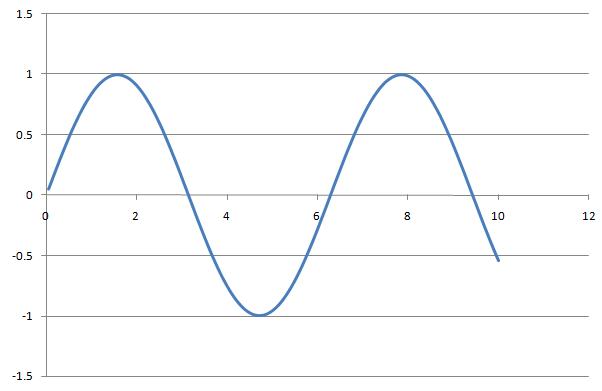(→Periodic Signals Revisited) |
(→Periodic Signals Revisited) |
||
| Line 3: | Line 3: | ||
1. By sampling at different frequencies the function <math>y=sin(x)\!</math> can appear as both periodic and non-periodic in DT. For example: | 1. By sampling at different frequencies the function <math>y=sin(x)\!</math> can appear as both periodic and non-periodic in DT. For example: | ||
| − | <math>y=sin(x) \!</math> in CT | + | <math>y(x)=sin(x) \!</math> in CT |
[[Image:Sinwave_ECE301Fall2008mboutin.jpg]] | [[Image:Sinwave_ECE301Fall2008mboutin.jpg]] | ||
| + | |||
| + | <math>y[n]=sin[n] with a sample rate of 1 | ||
| + | [[Image:samprate1_ECE301Fall2008mboutin.jpg]] | ||
Revision as of 19:01, 11 September 2008
Periodic Signals Revisited
1. By sampling at different frequencies the function $ y=sin(x)\! $ can appear as both periodic and non-periodic in DT. For example:
$ y[n]=sin[n] with a sample rate of 1 [[Image:samprate1_ECE301Fall2008mboutin.jpg]] $


